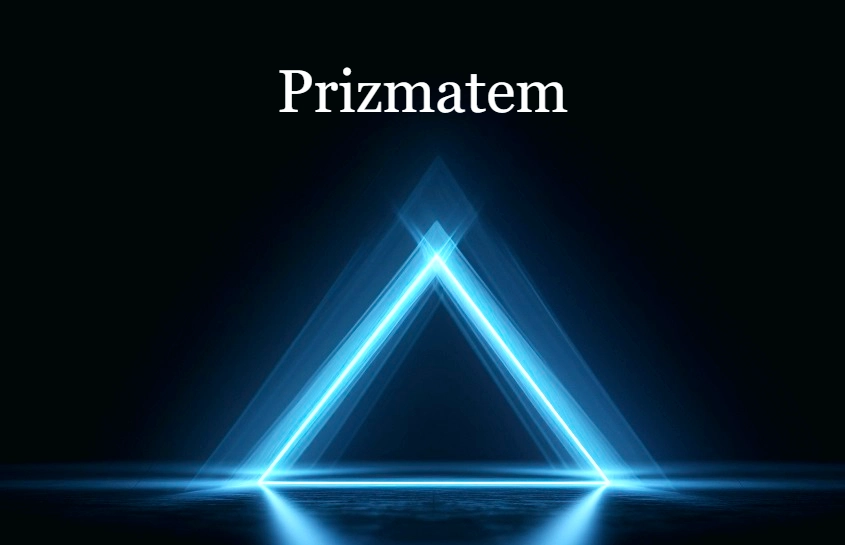In digital innovation eras, new ideas often emerge quietly before capturing attention across creative, technological, and design communities. Prizmatem is one such name — mysterious at first glance, yet full of intrigue and symbolism.
The term suggests color, light, and transformation — much like a prism that bends light into a spectrum of possibilities. Whether it’s used to describe a system, a philosophy, or a design language, Prizmatem has become associated with clarity, depth, and multi-layered thinking.
This article gives you information about what Prizmatem truly means, where the idea might have come from, and why it is quickly gaining recognition among creators, designers, and thinkers worldwide.
What Is Prizmatem?
At its heart, Prizmatem can be understood as a concept that blends technology, creativity, and perception.
The word itself seems inspired by “prism” — an optical object that refracts light and reveals the hidden colors within. In the same way, Prizmatem symbolizes systems or ideas that break complexity into clarity. It represents how one concept, when seen from different angles, can reveal many layers of meaning.
In technology and design, Prizmatem is sometimes used to describe tools, digital platforms, or frameworks built with modular or layered architecture. These are systems that do not work in one straight line but in multiple layers — each reflecting a different function, emotion, or insight.
The Meaning Behind the Name
Just like light passing through a prism, Prizmatem represents the transformation of something ordinary into something extraordinary.
- A single beam of light becomes a rainbow.
- A single idea becomes a multidimensional vision.
- A single system becomes an ecosystem of possibilities.
That’s what Prizmatem aims to embody. It’s about discovery, expansion, and viewing life, design, or data through multiple perspectives.
In creative circles, it’s seen as an approach to problem-solving — where color, structure, and adaptability meet imagination. In technology, it describes tools that are dynamic, responsive, and capable of adapting to context.
Origins and Evolution
While the exact origin of the term Prizmatem is uncertain, it has grown as an internet concept over the last few years — often used by designers, developers, and content creators.
The earliest mentions link it to modular design and digital layering, where systems are built like light through glass — interconnected but distinct. Others associate it with creative frameworks that combine artistic imagination and analytical precision.
In essence, Prizmatem isn’t just a name. It’s an evolving philosophy about how things interact: color with structure, data with emotion, and people with technology.
How Prizmatem Works (Conceptually)

If we treat Prizmatem as a system or model, its principles revolve around layered perception and adaptive interaction.
Here’s how it conceptually works:
- Layering of Ideas
Just as light separates into colors, complex systems or ideas are broken into smaller, clearer layers. Each layer can function independently yet still remain connected to the whole. - Adaptive Reflection
A prism doesn’t just divide light; it also reflects it based on the surrounding conditions. Similarly, Prizmatem-based models adjust and respond dynamically to the environment or user interaction. - Balance Between Aesthetics and Function
Prizmatem merges the visual with the logical — combining beauty, usability, and purpose. A design or system that follows this idea looks good and feels right in use. - Continuous Discovery
Like light constantly shifting through glass, Prizmatem suggests ongoing transformation — there’s always something new to discover depending on how you view it.
Applications and Use Cases
Prizmatem is used in many creative and tech fields. Its layered and flexible design brings new ideas and clear visuals to every project.
1. Creative Design & Digital Art
Designers use the term Prizmatem to describe artworks or interfaces that change with perspective — a play of color, motion, and emotion. Websites, logos, and animations inspired by Prizmatem feel alive, layered, and immersive.
2. User Interface (UI) and Experience (UX) Design
In tech development, Prizmatem’s philosophy aligns with modern user experience principles. Dynamic color schemes, adaptive layers, and responsive transitions all echo the “prismatic” spirit — flexible and user-focused.
3. Educational Platforms
Interactive learning tools built on Prizmatem ideas help visualize complex subjects, letting learners “see through” problems and explore topics layer by layer — much like peeling back glass panels to understand what’s inside.
4. Data Visualization and Analytics
The concept has also been applied metaphorically in data visualization, where multi-dimensional data is turned into clear, visual insights — refracted into understandable patterns, just like light in a prism.
5. Branding and Marketing
For some, Prizmatem has become a creative brand name that represents innovation, clarity, and adaptability. Many modern brands want to express those very traits — making the concept both symbolic and marketable.
Key Features of Prizmatem Systems
| Feature | Description |
| Multi-layered Framework | Systems based on Prizmatem thinking often use modular designs with interconnected layers. |
| Adaptive Behavior | They respond to changes in context — user input, lighting, data, or emotion. |
| Visual Harmony | Blends artistic expression with technical precision. |
| Transparency & Depth | Encourages openness, insight, and exploration through visual or conceptual layers. |
| Scalability | Designed to grow and evolve — much like light expanding into space. |
The Philosophy Behind Prizmatem
Beneath the surface, Prizmatem is about how we understand complexity. It teaches that every idea, relationship, or system has multiple sides. If you shift your angle slightly, you might see something new — a color or a meaning that wasn’t visible before.
This way of thinking can apply to creativity, business, technology, and even personal growth.
It encourages:
- Curiosity –Keep explore and finding new information.
- Empathy – See the things in different perspectives.
- Adaptability – to change gracefully when light, or life, shifts direction.
In a world that often demands simplicity, Prizmatem reminds us that beauty often lies in layers, not in flat answers.
Benefits of the Prizmatem Approach
Prizmatem boosts creativity and helps simplify complex ideas. It adapts easily across fields while keeping a strong human-centered focus.
- Enhanced Creativity
By encouraging multi-perspective thinking, it pushes creators and teams to go beyond traditional boundaries. - Clarity Through Complexity
It takes something complex and breaks it down into understandable parts — helping both creators and audiences grasp the bigger picture. - Adaptability Across Fields
The concept fits seamlessly into art, design, education, AI tools, and even emotional intelligence training. - Human-Centered Focus
Though inspired by technology, Prizmatem ultimately celebrates human creativity — the ability to see beauty in patterns and meaning in detail. - Visual Impact
Designs influenced by Prizmatem are often visually stunning — rich in color, motion, and light balance — attracting attention while maintaining clarity.
Challenges and Limitations
While Prizmatem’s conceptual beauty is inspiring, it isn’t without challenges:
- Lack of Standard Definition: Since it’s not tied to one organization or product, people interpret it differently.
- Over-Complexity Risk: Too many layers or ideas can overwhelm users if not designed carefully.
- Practical Implementation: Turning artistic theory into functional design requires skill and technical precision.
- Adoption Curve: As an emerging concept, it may take time before businesses and creators fully understand how to apply it effectively.
Despite these hurdles, Prizmatem continues to capture the imagination of people who believe technology should not only work but also inspire.
Prizmatem in Modern Innovation
As technology and art converge, Prizmatem represents the future of creative systems — where emotion, logic, and design are not separated but flow together.
We see this idea quietly shaping:
- AI-assisted design tools that create layered visual outputs.
- 3D and AR interfaces that react to light and movement.
- Sustainable design frameworks built with transparency and depth in mind.
In many ways, Prizmatem aligns with how the digital world is evolving: flexible, adaptive, colorful, and built for human connection.
The Future of Prizmatem
The potential of Prizmatem lies not in one company or product, but in its idea — a bridge between perception and creation.
Future generations of designers and engineers could use Prizmatem-inspired systems to:
- Develop interactive educational tools that make learning visual and intuitive.
- Build immersive art installations where technology reacts like living light.
- Create interfaces that adjust to human mood or environmental lighting.
- Encourage ethical design that values transparency, clarity, and depth.
As the digital age matures, Prizmatem may become not just a trend but a guiding principle — proof that the best innovations are born where science meets imagination.
Conclusion
Prizmatem is more than a buzzword — it’s an evolving idea that mirrors the way we see and experience the modern world. Like light through a prism, it reminds us that truth and beauty rarely exist in one color. They are built from layers, reflections, and perspectives.
In design, in technology, and in life, Prizmatem represents the courage to look deeper — to explore every shade, every layer, and every possibility hidden within the light.
